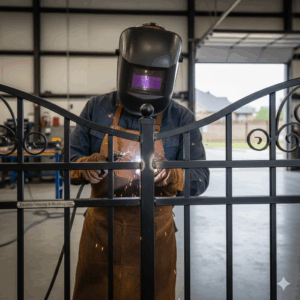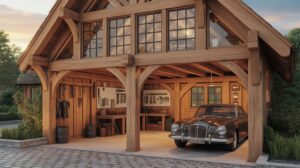Eco-Friendly Homes: What to Expect When Hiring Green Building Contractors in CT
In Connecticut, the push toward more sustainable living has led many homeowners to consider eco-friendly homes that minimize environmental impact while maximizing efficiency and comfort. When planning to build or renovate your dream home, hiring the right Green Building Company CT is essential for achieving these goals. In this article, we’ll explore what you can expect when working with green building contractors in Connecticut, covering everything from eco-friendly materials to energy-efficient design.
What Defines Eco-Friendly Homes?
Eco-friendly homes are built with sustainability in mind, focusing on energy efficiency, waste reduction, and the use of sustainable materials. These homes are designed to have a minimal environmental footprint, lower utility costs, and provide a healthier living environment.
Key Features of Eco-Friendly Homes
- Energy Efficiency: Incorporating high-performance insulation, energy-efficient HVAC systems, solar panels, and advanced window technologies to minimize energy usage.
- Sustainable Materials: Using eco-friendly, renewable, or recycled materials like bamboo, reclaimed wood, and non-toxic paints.
- Water Conservation: Installing low-flow faucets, rainwater harvesting systems, and xeriscaping to reduce water usage.
- Indoor Air Quality: Using materials and systems that improve air quality, such as low-VOC paints, natural ventilation, and non-toxic finishes.
- Waste Reduction: Prioritizing recycling during construction and using materials that reduce the environmental impact.
What to Expect When Hiring Green Building Contractors in Connecticut
When hiring a Green Building Company CT, it’s important to understand what makes these contractors different from traditional builders. Eco-friendly contractors are experts in designing and constructing homes that are not only energy-efficient but also sustainable in every sense. Here’s what you can expect during the process:
1. Expertise and Certifications
Green building contractors often hold certifications that show their commitment to sustainable building practices. These can include:
- LEED Certification (Leadership in Energy and Environmental Design): This internationally recognized certification ensures that the contractor meets high standards in energy and environmental design.
- ENERGY STAR: This label guarantees the contractor is using energy-efficient practices and technologies.
- Passive House Certification: Focuses on creating highly insulated and airtight homes, minimizing the need for heating or cooling.
When selecting a Green Building Company CT, ask about their experience with green construction and whether they hold these certifications.
2. Initial Consultation and Design Process
Green building contractors typically start with a consultation where they discuss your goals for energy efficiency, sustainability, and design preferences. They will conduct a thorough assessment of your property to understand the best strategies for your home’s energy needs.
Expect a detailed discussion on various green features, such as:
- Solar panel installation
- Rainwater harvesting
- High-efficiency insulation and windows
- Use of eco-friendly building materials
This consultation is essential for ensuring that your eco-friendly home meets your needs while complying with local building codes and environmental standards.
3. Upfront Costs and Long-Term Savings
While green construction may involve higher initial costs, the long-term savings are significant. Energy-efficient homes typically have much lower utility bills, and the use of sustainable materials ensures lower maintenance costs. Additionally, many green building contractors offer advice on local rebates and incentives in Connecticut, such as:
- Energize CT: A program that provides rebates for insulation, energy-efficient heating, and cooling systems.
- CT Green Bank: Offers financing options for renewable energy systems and energy-efficient building practices.
Your green contractor will help guide you through these financial incentives, making your sustainable project more affordable.
4. Timeline and Construction Process
Building an eco-friendly home can sometimes take longer than a traditional build due to the specialized materials and technologies used. Be prepared for a construction timeline that may include extra steps, such as:
- Custom design elements like sustainable insulation or passive solar heating systems.
- Detailed energy modeling and performance assessments.
- Sourcing eco-friendly materials, which may have longer lead times.
However, the benefits far outweigh the extra time. With the expertise of a Green Building Company CT, the end result will be a highly efficient, comfortable, and environmentally friendly home.
What Makes Green Construction Stand Out?
1. Sustainability:
Green building is not just about energy efficiency; it’s about sustainability in all aspects. From materials to construction methods, everything is designed to minimize the home’s environmental footprint.
2. Healthier Living:
Green homes provide better air quality and use non-toxic materials, which are beneficial for the health of the occupants. The use of high-quality ventilation systems and natural materials contributes to a healthier indoor environment.
3. Long-Term Value:
Homes that are energy-efficient and built with sustainable materials tend to appreciate in value over time. Potential buyers are often willing to pay more for homes that are eco-friendly, making green homes a sound investment.
Key Considerations When Choosing a Green Building Contractor in CT
When hiring a green building contractor in Connecticut, it’s important to ask the right questions to ensure they are qualified to handle your project. Here are some tips:
1. Check Their Portfolio
Ask for examples of previous projects where they implemented green construction practices. A strong portfolio of completed eco-friendly homes will demonstrate their expertise and commitment to sustainability.
2. Understand the Financial Implications
Make sure you have a clear understanding of the costs involved. While green homes can be more expensive upfront, the savings on energy bills and maintenance will help offset the cost in the long run. Be sure to ask about financing options and available incentives.
3. Evaluate Their Knowledge of Local Regulations
Connecticut has specific building codes and regulations that may impact your green building project. A qualified Green Building Company CT should be familiar with these codes and work to ensure your home complies with all local laws.
4. Ensure Effective Communication
Clear communication is essential for any construction project. Ensure that your contractor is transparent about their process, timeline, and costs. A good green building contractor will be responsive to your questions and concerns throughout the process.
Benefits of Building an Eco-Friendly Home
Building an eco-friendly home with a Green Building Company CT offers numerous benefits, including:
- Reduced Carbon Footprint: Sustainable homes help reduce greenhouse gas emissions by using renewable energy sources and energy-efficient technologies.
- Lower Utility Bills: With high-efficiency heating, cooling, and lighting systems, you can save money on monthly utility bills.
- Increased Property Value: Homes with green features often have a higher resale value due to growing demand for eco-friendly homes.
- Improved Comfort and Health: Energy-efficient insulation, healthy air quality, and better thermal comfort make green homes a healthier place to live.
Conclusion: Embrace Sustainable Living in Connecticut
Building an eco-friendly home in Connecticut can be a rewarding experience, especially when you partner with the right Green Building Company CT. From reducing energy consumption to creating a healthier indoor environment, the benefits of green construction are far-reaching. By hiring a qualified green building contractor, you’re investing in your home’s long-term sustainability, comfort, and value. With careful planning and the expertise of a trusted contractor, your eco-friendly home can become a reality—helping you live greener and more sustainably for years to come.









